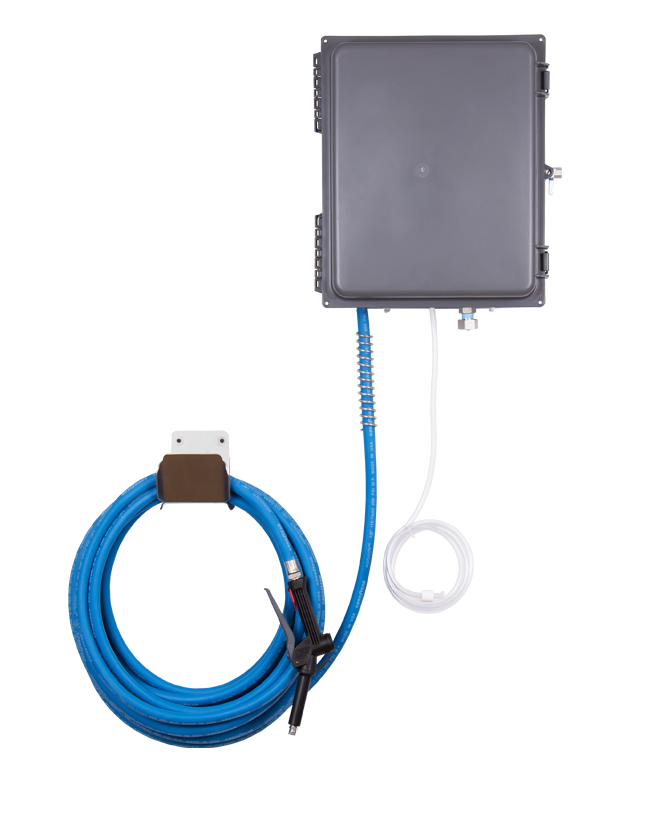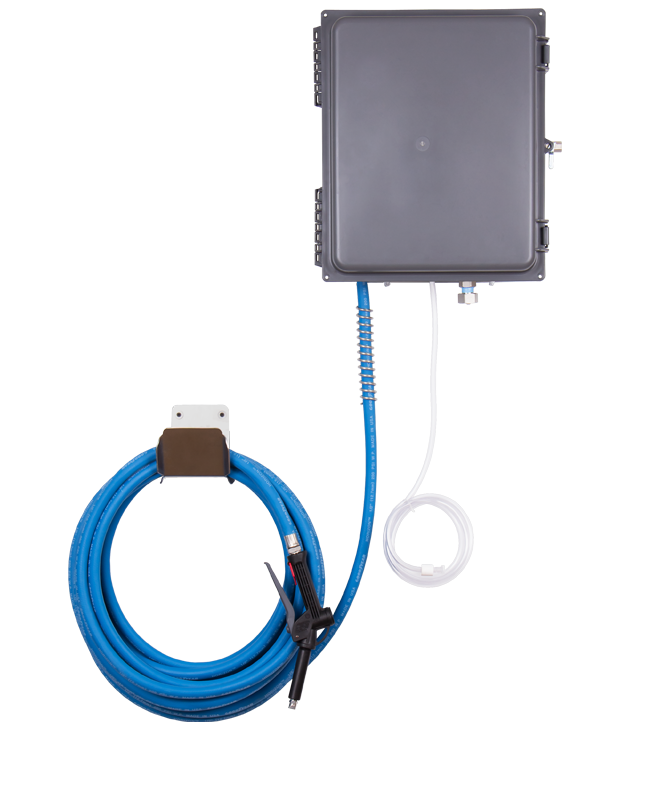Concentrate Spray Unit
#SP-WCWall mounted, air-powered, concentrate spray unit with a stainless steel ball valve. Choose between Santroprene, Viton, or Kalrez pump seals and hose color options.

Wall mounted, air-powered, concentrate spray unit with a stainless steel ball valve. Choose between Santroprene, Viton, or Kalrez pump seals and hose color options.
compressed air
draws from concentrated product
34:1 to 640:1 with ST2520SS fan tip;
24:1 to 640:1 with ST2550SS fan tip
one product
8 ft. (2.4 m) clear hose with 1/4 in. (6.4 mm) inside diameter
50 ft. (15.2 m) hose, with 1/2 in. (12.7 mm) inside diameter
polypropylene spray gun with 25˚ fan tip
10-12 ft. (3.0-3.7 m)
2 gal/min (7.6 l/min) of liquid with ST2520SS fan tip;
4-5 gal/min (15.1-18.9 gal/min) of liquid with ST2550SS fan tip
2 gal/min (7.6 l/min) with ST2520SS fan tip; 4-5 gal/min (15.1-18.9 l/min) with ST2550SS fan tip
Santoprene, Viton, or Kalrez
*dilution rates and flow rates given are based on chemical with viscosity of water and factory air pressure settings.
40-80 psi (2.8-5.5 bar) with 2 cfm (56.6 l/min)
10-100 psi (0.7-6.9 bar)
backflow prevention is required – consult local plumbing ordinances for more information
40-100˚F (4.4-37.8˚C)
Chemical products used with this equipment must be formulated for this type of application and compatible with unit materials and pump seals. For more information on chemical compatibility, consult the manufacturer or SDS for your product or contact our customer service department.
| PUMP SEAL MATERIAL | |
|---|---|
| SP-WC | Santoprene (standard) |
| Viton (V) | |
| Kalrez (K) |
Add option codes to item number as shown. For standard options, no option code is needed. Examples:
other available options:
Choose a pump seal material that is compatible with the chemicals you will use. Chemical incompatibility can cause accelerated wear and equipment failure that is not covered by warranty, so it’s important to do your research.

We have distributors all over the world. Tell us a little bit about you and your equipment needs, and we’ll help you find or become a distributor.
We can’t clean your inbox, but we can help keep it interesting. Stay in the know on products, improvements, and other news.